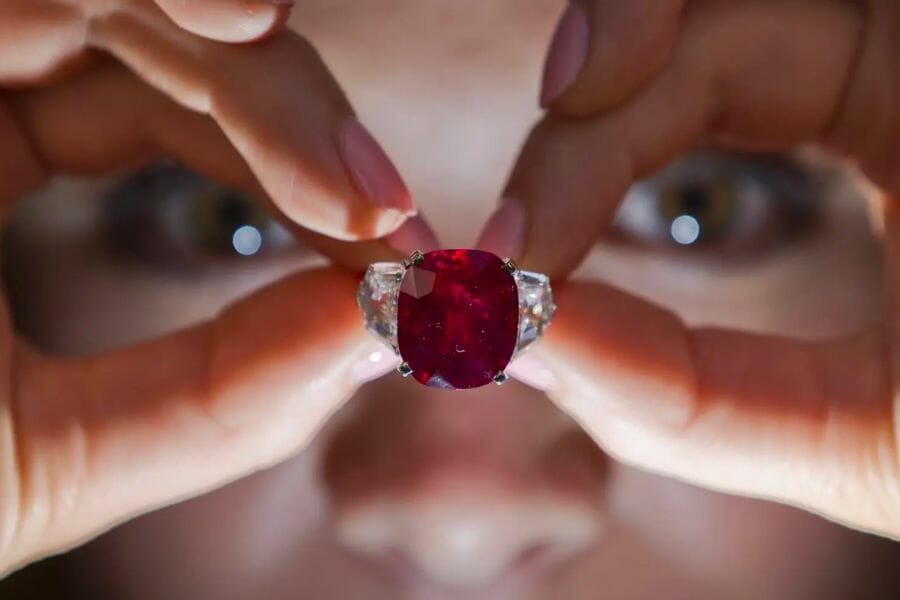Royalty, power, and passion: all of these have long been associated with the beautiful Ruby gem. With its luscious red hue, rarity, and durability, Ruby has captivated hearts and minds for centuries. Its timeless appeal and cultural significance have crowned it the “King of Gemstones”. And what price would you put on a King if not expensive, right?
Often used in high-end jewelry designs today, Ruby remains to be a symbol of wealth and luxury. It can hold value over time, making it a popular choice for engagement rings and other pieces of jewelry that are meant to last a lifetime.
Ruby’s value can vary greatly depending on many factors, especially its color, clarity, and cut. But one thing is for sure— the bigger and clearer the gem, the higher the price tag! If you’re curious to know more about how much Ruby is really worth (and we kid you not, it can be shockingly expensive!), then read on and be captivated by the value of this precious gemstone.
What Ruby Is
Ruby is a member of the corundum family that gets its vibrant red color from the presence of chromium. It’s not only beautiful but also rare and durable, making it one of the most valuable gemstones out there.
Aside from its astounding price tag (some of the rarest and most valuable one can cost more than a luxury car or a small house!), Ruby has been cherished throughout history for their supposed mystical powers and associations with love, passion, and wealth. Wearing a ruby is like carrying a piece of history and cultural significance on your finger or around your neck.
Below are Ruby’s prices based on its origin, treatment, and carat.
Burma Ruby
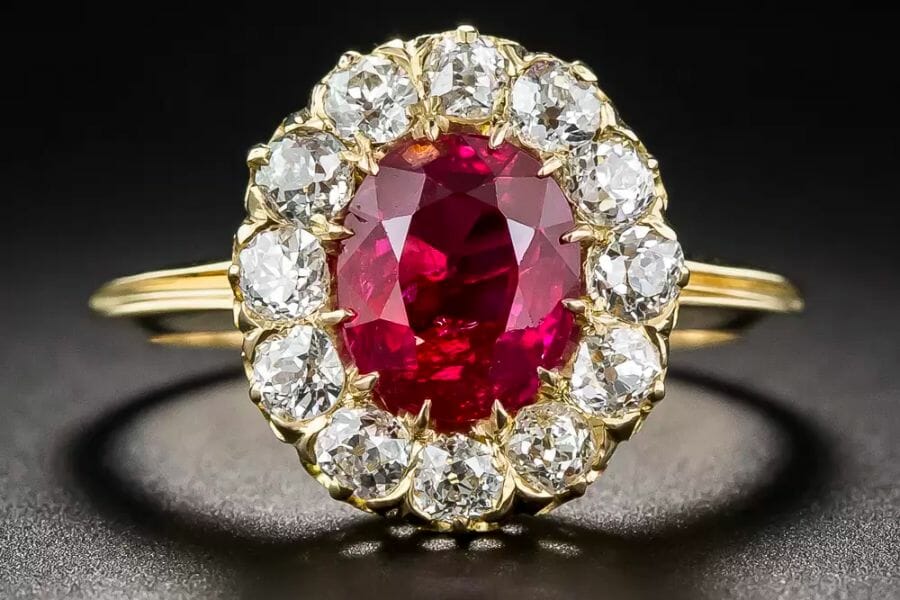
Burma Rubies are considered as one of the most sought-after gemstones in the world. It’s a variety of the mineral corundum that’s named after its country of origin, Myanmar (formerly Burma).
Burma Rubies are formed deep within the earth’s crust, where extreme heat and pressure cause minerals to crystallize and form this luscious red gemstone. But what makes these rubies so valuable? Well, first of all, they’re rare— only a small percentage of rubies come from Burma. Secondly, their pigeon blood red color is simply mesmerizing and hard to find in other rubies. And finally, they have a unique fluorescence that gives them a glowing effect under natural light.
So, if you’re lucky enough to own a Burma Ruby, cherish it like a precious treasure because it truly is one!
How much is Burma Ruby worth
Determining Ruby’s price, including Burma can be a complex process. The finest (and most expensive) Burma rubies have a deep, intense red color with a slight blue tint, which is highly sought after by collectors and connoisseurs. Here’s the cost of these precious gems:
| Color | Treatment | Price (Per Carat) |
| Top Color: R 6/6 | Unheated | $935,000 – $1,400,000 |
| Very Good Color | Unheated | $8,000 – $42,000 |
| Good Color | Unheated | $2,400 – $24,000 |
| Fair Color | Unheated | $800 – $4,800 |
Heat Treated Ruby
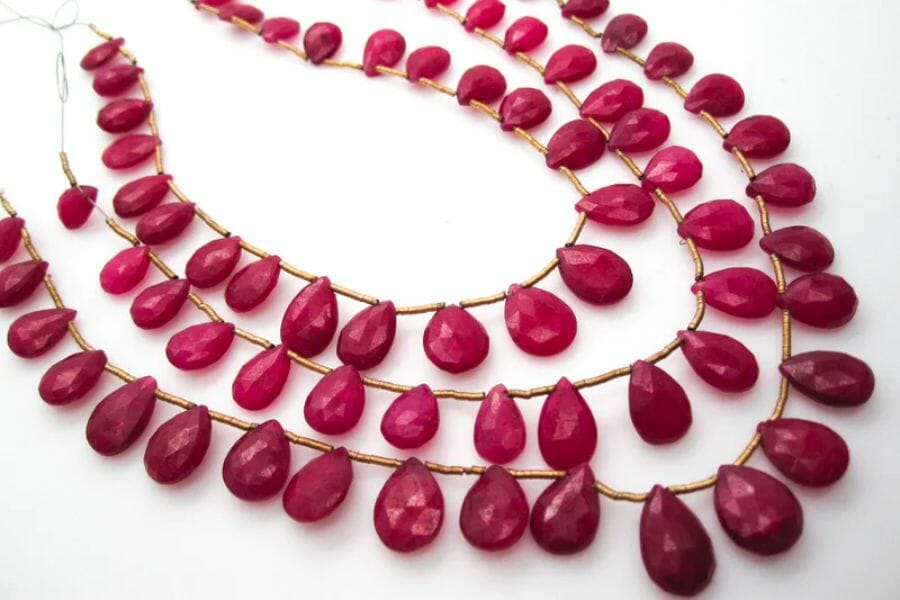
Heat treatment is a process where a Ruby is subjected to high temperatures to enhance their color and clarity. While some may argue that this process reduces the value of a Ruby, others see it as a way to bring out its natural beauty.
Heat Treated Ruby is formed in the same way as natural ones, deep within the earth’s crust, but they undergo an extra step in the manufacturing process. By heating the Ruby to a specific temperature, its color can be enhanced to a deep, vibrant red that’s highly sought after by jewelers and collectors.
Because it has undergone treatment, a Heat Treated Ruby is a more affordable option for those who want the look and feel of a Ruby without the hefty price tag. But whether you’re a purist who only collects natural gemstones or a savvy shopper who wants to save some cash, a Heat Treated Ruby is definitely worth considering!
How much is Heat Treated Ruby worth
The good news is that, while Heat Treated Ruby has undergone a treatment process, it still has intrinsic value based on its color, clarity, and other factors. To determine its value, it’s important to consider the quality of the treatment. If the treatment was done poorly or has negatively impacted the gemstone’s appearance, its value will be lower. However, if the treatment was done properly and has enhanced the Ruby’s color and clarity, its value may be higher.
Here’s what we’re looking at in terms of prices of Heat Treated Ruby based on its color and inclusions.
| Color | Price (Per Carat) |
| Very Good Color | $3,600 – $12,000 |
| Good Color | $1,200 – $9,000 |
| Fair Color | $240 – $2,400 |
Why Ruby Is So Expensive
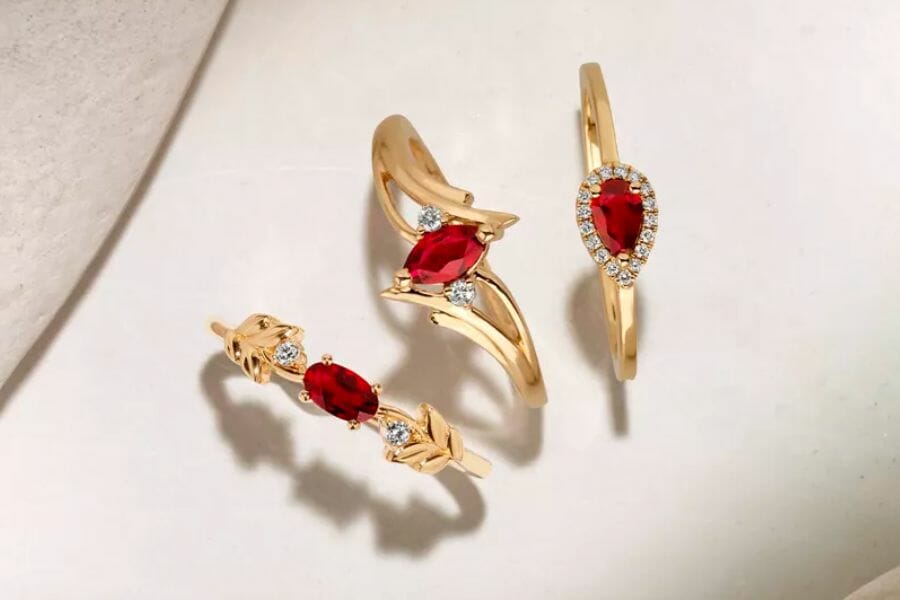
Ruby’s mesmerizing beauty can definitely make anyone weak in the knees! But what really makes them so valuable?
Firstly, a Ruby is valued for its stunning color. Its deep, rich red hue is associated with passion, love, and energy, making it a popular choice for jewelry and other adornments. Plus, let’s be honest, who doesn’t love a little pop of red in their outfit?
But it’s not just about looks: Rubies also have a rich cultural and historical significance. In ancient times, these gemstones were believed to possess magical properties that could protect the wearer from harm and bring good luck. They were also associated with royalty and nobility, making them a symbol of wealth and power. That’s why wearing a ruby not only adds a touch of glamour to your outfit, but can also make you feel like a queen or king.
Another reason for the Ruby’s value is its rarity. While it can be found in many parts of the world, high-quality one with a deep red color are much rarer. This scarcity makes it highly coveted and drives up its value. It’s like finding a needle in a haystack— but the needle is worth a small fortune!
And let’s not forget about the durability of these precious stones. Ruby is one of the hardest gemstones, making it ideal for everyday wear and ensuring that it’ll last for generations to come. It’s also resistant to scratching and chipping, so you don’t have to worry about being too careful when wearing it.
So there you have it. Ruby’s stunning color, cultural significance, rarity, and durability are just a few of the many reasons why it’s so valued. Who wouldn’t want to own a gemstone that’s not only beautiful but also packed with so much history and meaning?
How To Determine The Value Of Ruby
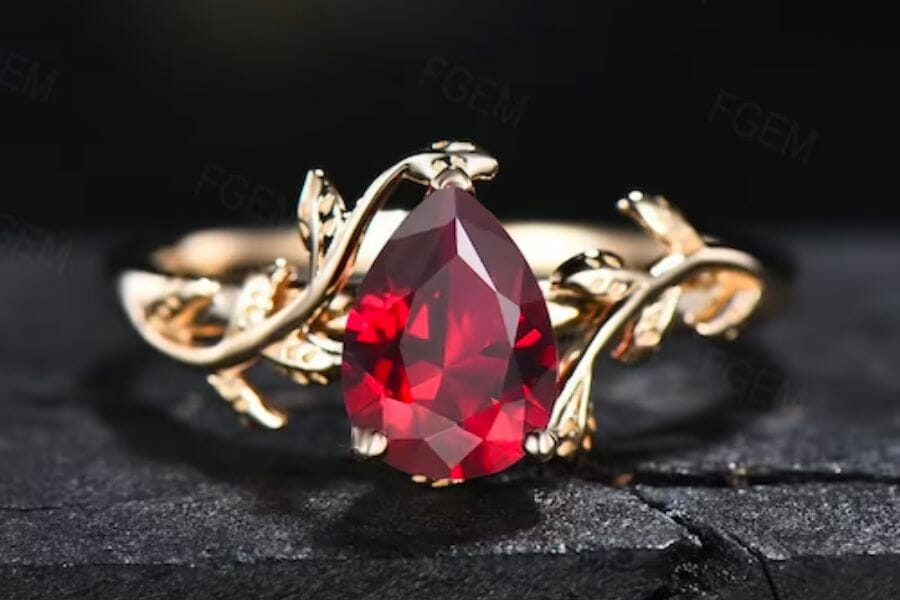
Several factors determine the price of Ruby. The most significant ones are the following:
Color
This is the most crucial factor when it comes to determining the price of a Ruby. The priciest Ruby has a color that can only be described as a deep red hue with a hint of blue, which is also called as “pigeon red blood” color. Ruby’s color is graded as Top Color, Very Good Color, Good Color, and Fair Color.
The nearer the color is to pigeon red blood, the closer the grading is to Top Color. And the more intense and saturated the color is, the more valuable the Ruby is, too. Meanwhile, Rubies with a purplish or pinkish tint are generally considered to be of lower value.
Clarity
Clarity is another essential factor for Ruby valuation. A Ruby should have minimal to no visible inclusions, cracks, or other blemishes. The clearer and more transparent the Ruby is, the more valuable it is.
Carat
Carat weight refers to the size of the Ruby, with larger one being rarer and, therefore, more valuable.
Origin
Certain regions in the world are known for producing Rubies of exceptional quality, so the demand for them is typically higher, which drives up their price.
The most famous source of high-quality Rubies is Burma (Myanmar) as discussed above. Another region is Mozambique, which produces a typically a darker shade of red Ruby, but are more affordable than Burma rubies. Other Ruby-producing regions include Thailand, Sri Lanka, and Madagascar.
Type
There are three types of rubies: natural, synthetic, and treated.
Natural rubies are formed in the Earth’s crust over millions of years, and their rarity and natural beauty make them highly sought after. Synthetic rubies, on the other hand, are created in a laboratory. While they have the same chemical and physical properties as natural rubies, they’re generally less valuable due to their lack of rarity and natural formation. Lastly, treated rubies are natural rubies that have been enhanced or treated in some way to improve their color or clarity.
Treatments and Enhancements
Heat treatment, as discussed above, is widely accepted for Rubies. Other treatments include filling and fracture-filling. These treatments can significantly reduce the value of the Ruby, as they are not considered to be permanent and can affect its durability.
An example of enhancement, on the other hand, is glass-filling. While this significantly enhances the appearance of the Ruby, it also reduces its value as it is not a natural occurrence.
Cut and Shape
Cut and shape are also crucial in determining the value of a Ruby. The stone should be cut in a way that maximizes its brilliance and enhances its color. A well-cut Ruby will have better light reflection and will appear more vibrant.
Fluorescence
Fluorescence refers to Ruby’s ability to emit visible light when exposed to ultraviolet (UV) radiation. While fluorescence does not affect the ruby’s physical or chemical properties, it can impact its visual appearance and therefore, its value. Rubies with no fluorescence or weak fluorescence are more valuable than those with strong fluorescence.
Carving and Craftsmanship
Rubies can be carved into a variety of shapes and designs, such as faceted cuts or intricate engravings. The quality and complexity of the carving, typically determined by the skill of the craftsman, the level of detail, and the overall aesthetic appeal of the design, can impact a Ruby’s value.
The setting or mounting of the Ruby can also impact its value. A high-quality setting made of precious metals such as gold or platinum can add to the value of the gemstone.
Ruby Price By Color, Clarity, and Cut
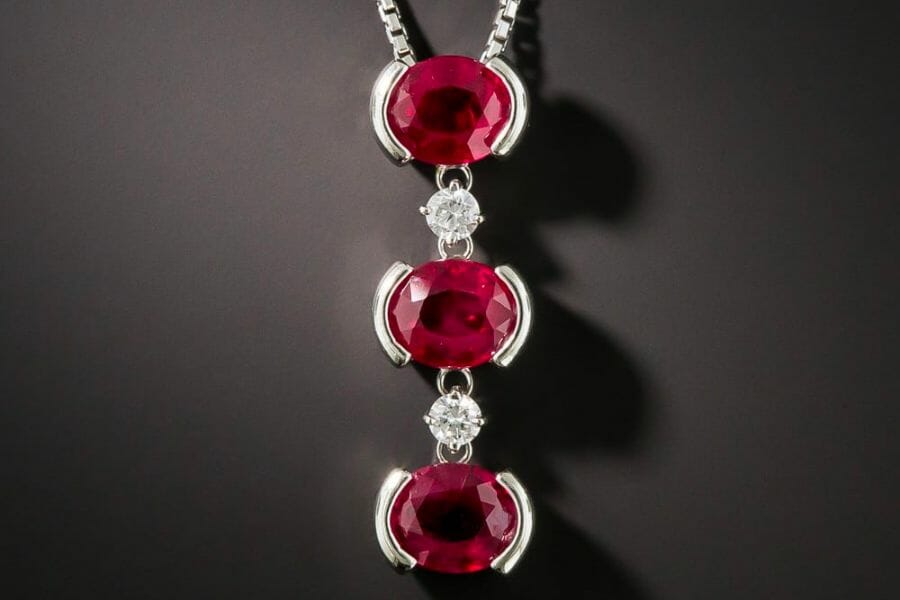
When it comes to determining the price of a Ruby, color, clarity, and cut are two of the most important factors to consider. Generally speaking, it’s the combination of these factors and others that dictates the value of a Ruby, making it essential to consider all aspects when evaluating its worth.
Below are the values of Ruby based on a combination of these factors:
Ruby values by Color and Clarity
| Color | Origin and Treatment | Price (Per Carat) |
| Top Grade | Burma, Unheated | $935,000 – $1,400,000 |
| Very Good | Burma, Unheated | $8,000 – $42,000 |
| Very Good | Any, Heat Treated | $3,600 – $12,000 |
| Good | Burma, Unheated | $2,400 – $24,000 |
| Good | Any, Heat Treated | $1,200 – $9,000 |
| Fair | Burma, Unheated | $800 – $4,800 |
| Fair | Any, Heat Treated | $240 – $2,400 |
| Fair | India | $1 to $15 |
Ruby values by cut
| Cut | Location | Price (Per Carat) |
| Cabochon | Any | $13 to $850 |
| Star Ruby | Any | $80 to $1,800 |
As you can see, Ruby’s price varies widely depending on many factors. Let’s play a bit some more as we discover its value. Now, we’ll determine the price of Ruby using different units of measurement:
Ruby pricing by unit of measurement
| Measurement | Price |
| A carat of Ruby | $1 to $1,400,000 |
| A gram of Ruby | $5 to $7,000,000 |
| An ounce of Ruby | $142 to $198,446,500 |
| A kilogram of Ruby | $5,000 to $7,000,000,000 |
| A pound of Ruby | $2,268 to $3,175,144,000 |
| A ton of Ruby | $4,535,925 to $6,350,295,000,000 |
The Most Expensive Ruby
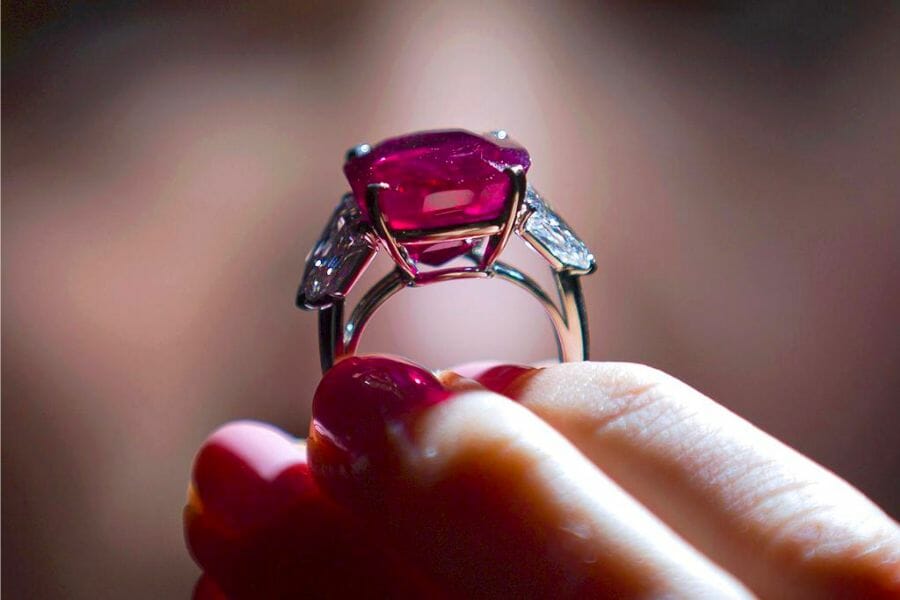
The most expensive Ruby gemstone ever sold is the Sunrise Ruby, which was sold for $30 million in 2015 at a Sotheby’s auction in Geneva, Switzerland. The Sunrise Ruby is a 25.59-carat, pigeon blood red Burma Ruby, considered the most sought-after and rarest type of Ruby in the world.
The Sunrise Ruby gets its name from a poem by the 13th-century Persian poet Rumi, who described a Ruby as “the deep sunrise within a perfect Ruby.” The gemstone was discovered in Mogok, Burma in the 1930s and was then cut and polished by Swiss jeweler Gübelin.
Its value is primarily due to its rare size, exceptional color, and origin from Burma, which is renowned for producing some of the world’s most exquisite Rubies. Additionally, the Sunrise Ruby hasn’t undergone any heat treatment, making it even more valuable.
The Sunrise Ruby’s sale price shattered the previous record for a Ruby gemstone, which was held by the Graff Ruby, a 8.62-carat Burma Ruby that sold for $8.6 million in 2014.
How To Get An Appraisal On Your Ruby
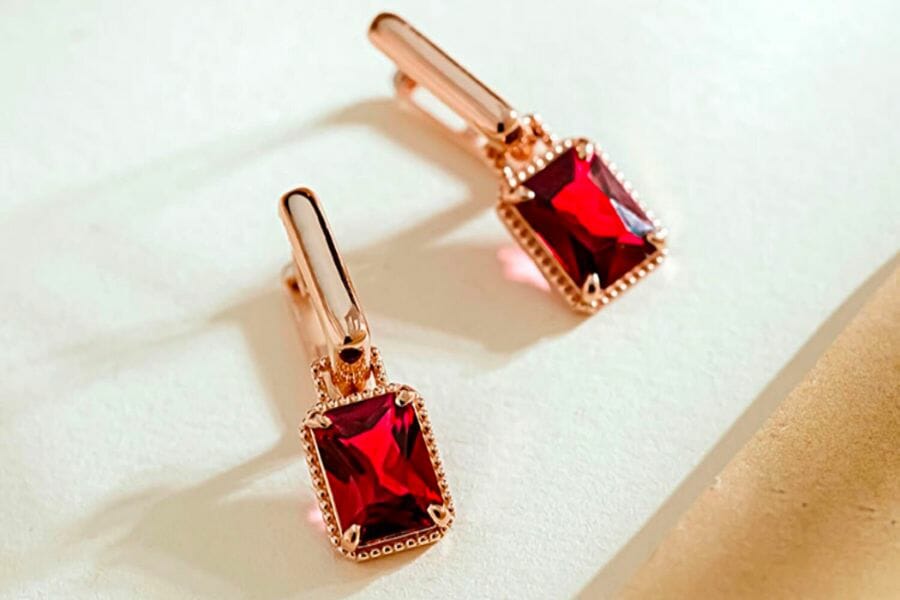
If you have a Ruby that you want to get appraised, it’s essential to find a reputable and experienced appraiser who specializes in gemstones. Here are some recommendations and suggestions to help you in the process:
- Research potential appraisers: Look for appraisers who are certified by recognized organizations, such as the American Gem Society (AGS) or the Gemological Institute of America (GIA). Check their reviews and ratings from previous clients.
- Ask for qualifications and experience: When contacting an appraiser, ask about their qualifications, years of experience, and their expertise in appraising rubies.
- Be transparent: Provide as much information as possible about the Ruby, such as its origin, treatment, and any certificates or reports you may have received when your purchased it.
- Get multiple appraisals: Consider getting appraisals from different appraisers to get a range of valuations and ensure you are getting a fair and accurate assessment.
- Keep the appraisal up-to-date: If you had your Ruby appraised several years ago, consider getting it re-appraised to account for changes in the market value and any potential damage or wear to the gemstone.
Ultimately, finding the right appraiser is crucial to ensure that you get an accurate appraisal of your Ruby and can make informed decisions about its value and potential sale or insurance coverage.

